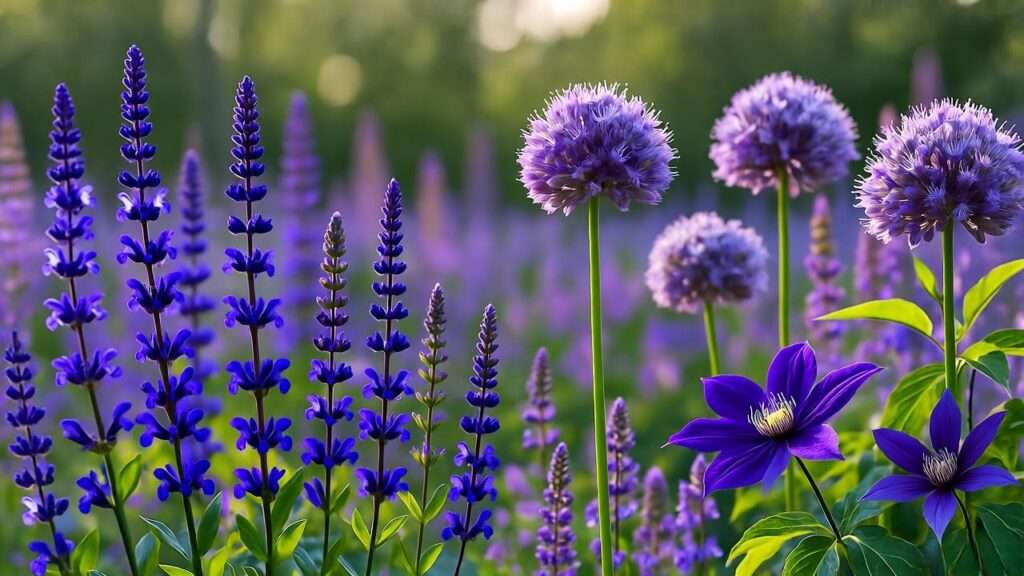Imagine stepping into your garden and being greeted by waves of vibrant purple blooms that return year after year with minimal effort. Sounds dreamy, right? 😍 Purple flower perennial plants are the secret to creating a low-maintenance, eye-catching garden that bursts with color and charm. Whether you’re a busy gardener or a beginner looking to add lasting beauty to your outdoor space, these hardy plants are your ticket to a thriving, pollinator-friendly landscape. In this comprehensive guide, we’ll explore the top 10 purple flower perennials, share expert care tips, and offer design ideas to elevate your garden game. Let’s dig in! 🌱
As a horticulturist with over a decade of experience designing vibrant gardens, I’ve seen firsthand how purple perennials can transform lackluster yards into stunning displays. Backed by insights from the Royal Horticultural Society (RHS) and practical hands-on knowledge, this article will help you choose the perfect plants to suit your climate, soil, and style. Ready to create a garden that’s both beautiful and effortless? Let’s explore why purple perennials are a gardener’s best friend.
Why Choose Purple Flower Perennial Plants? 🌼
The Allure of Purple in Garden Design
Purple is a color that captivates. It evokes calmness, sophistication, and a touch of royalty, making it a favorite for gardeners aiming to create a serene yet striking landscape. Purple flowers pair beautifully with greens, whites, and yellows, offering endless possibilities for creative garden designs. Whether you’re crafting a cottage-style border or a modern minimalist garden, purple flower perennial plants add depth and elegance. Their rich hues also attract pollinators like bees and butterflies 🐝, making your garden a haven for wildlife.
Benefits of Perennials for Busy Gardeners
Perennials are the backbone of low-maintenance gardening. Unlike annuals, which need replanting each year, perennials return season after season, saving you time, money, and effort. They establish deep root systems, making them more resilient to drought and poor soil conditions. Plus, many purple perennials are eco-friendly, supporting biodiversity by providing nectar and habitat for pollinators. For busy homeowners or novice gardeners, these plants offer a perfect balance of beauty and practicality, ensuring your garden thrives with minimal upkeep.
Top 10 Purple Flower Perennial Plants for Your Garden 🌺
1. Lavender (Lavandula spp.) 🌾
Description: Lavender is the poster child for purple flower perennial plants, known for its fragrant, silvery-green foliage and spikes of purple blooms. Varieties like ‘Hidcote’ and ‘Munstead’ are compact and versatile, perfect for any garden.
Why It’s Great: Lavender’s drought tolerance and long blooming period (June to August) make it ideal for borders, rock gardens, or containers. Its soothing scent also repels deer and rabbits, keeping your garden safe.
Care Tips: Plant in full sun with well-drained, slightly alkaline soil. Water sparingly once established, as lavender thrives in dry conditions. Prune after flowering to maintain shape and encourage new growth.
Expert Insight: “Lavender ‘Hidcote’ is my go-to for small gardens,” says Jane Thompson, a UK-based horticulturist. “Its compact size and deep purple flowers make it a standout.”
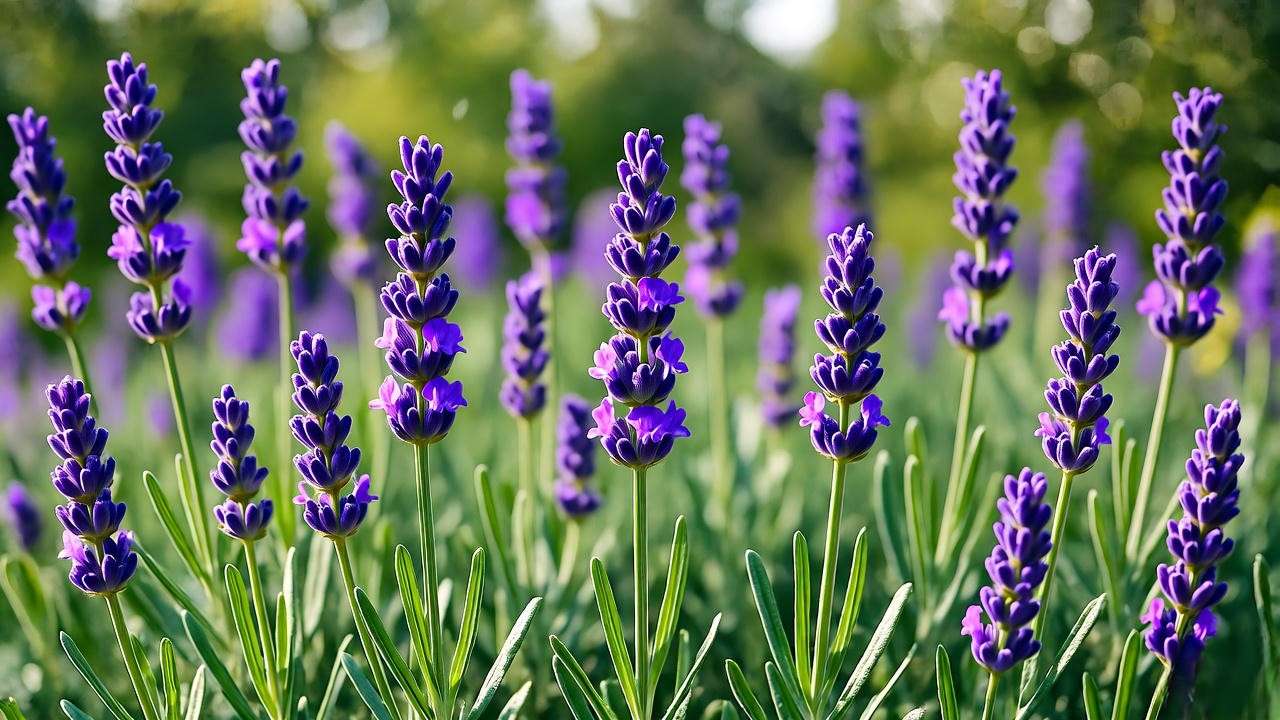
2. Salvia (Salvia nemorosa) 🌱
Description: Salvia, or sage, boasts spiky purple blooms that last from early summer to fall. Varieties like ‘Caradonna’ feature upright stems and vibrant color.
Why It’s Great: Salvia is a pollinator magnet, attracting bees and hummingbirds. It’s also deer-resistant and thrives in a range of climates, making it a versatile choice.
Care Tips: Plant in full sun with well-drained soil. Deadhead spent blooms to encourage a second flush. Cut back in late fall to promote healthy spring growth.
Design Idea: Pair salvia with yellow coreopsis for a bold, contrasting border that pops.
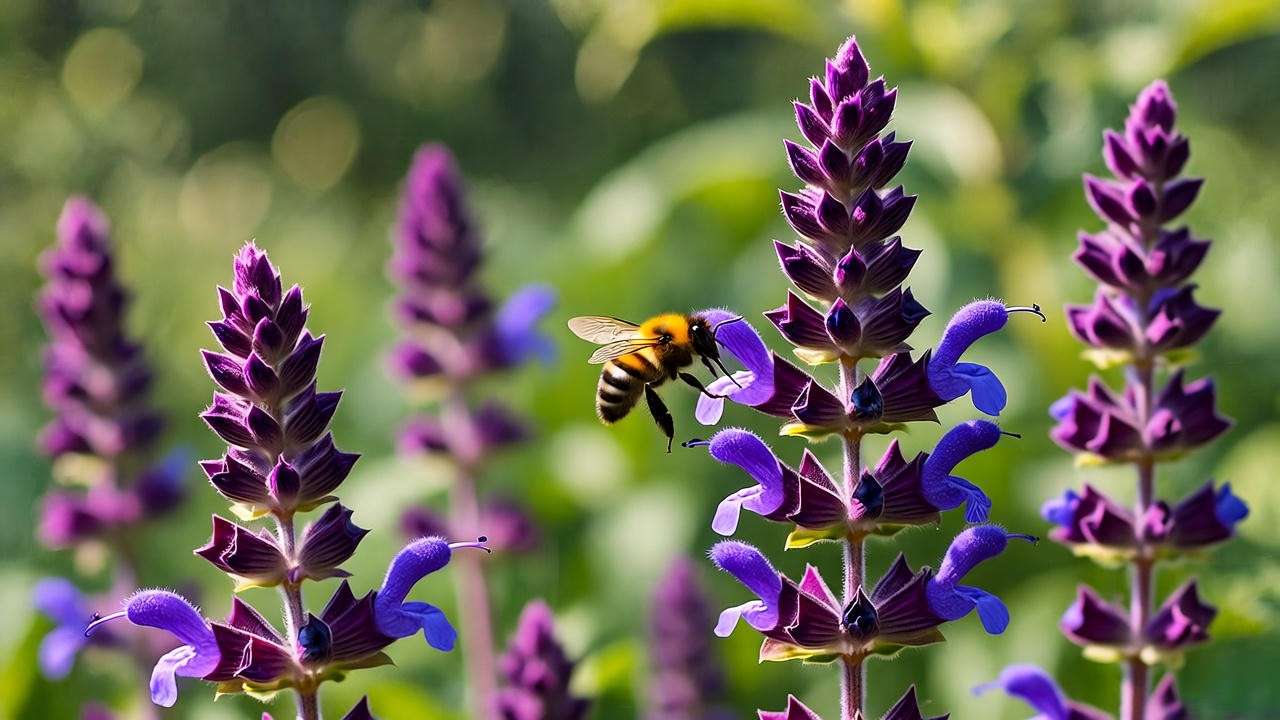
3. Catmint (Nepeta spp.) 😺
Description: Catmint’s soft, aromatic foliage and clusters of lavender-blue flowers create a delicate, airy look. ‘Walker’s Low’ is a popular variety for its long bloom time.
Why It’s Great: Easy to grow and low-maintenance, catmint is perfect for edging, ground cover, or spilling over walls. It’s also non-toxic and cat-friendly (though your feline friends might nibble!).
Care Tips: Thrives in full sun to partial shade and tolerates poor soil. Cut back after the first bloom for a second wave of flowers.
Fun Fact: Catmint’s scent repels mosquitoes, making it a great addition to patios or outdoor seating areas.
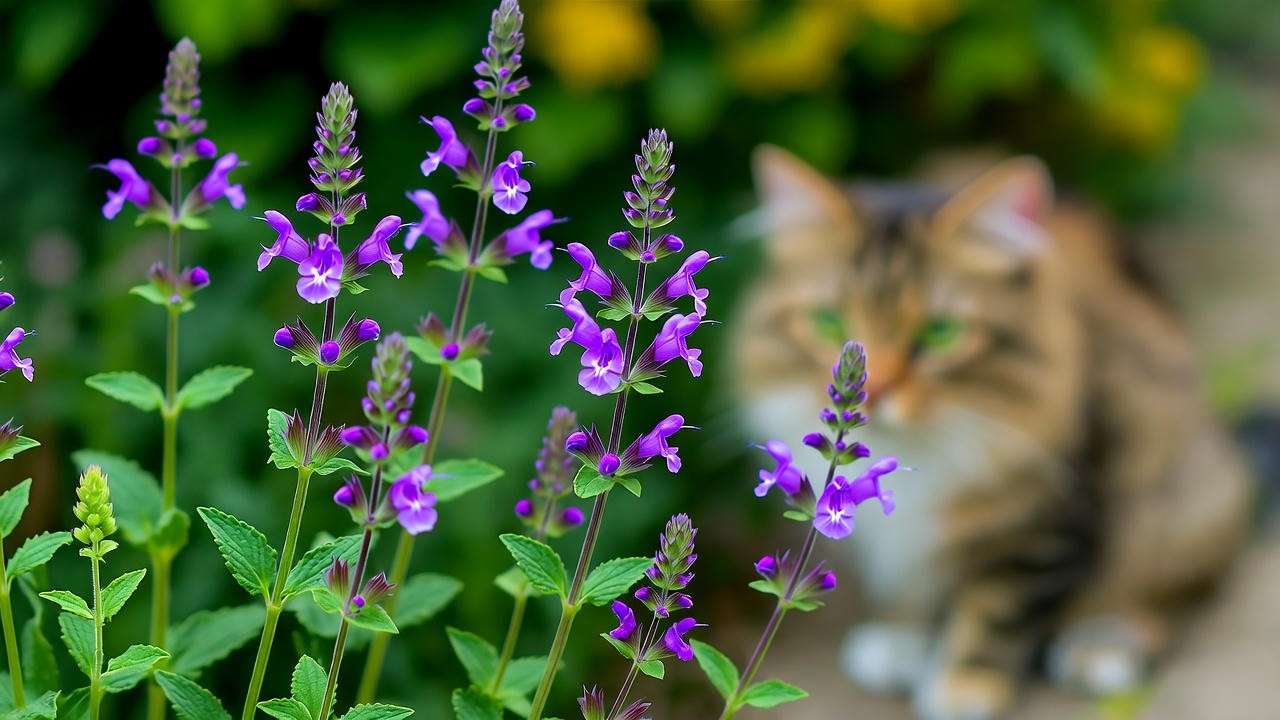
4. Allium (Allium spp.) 🧅
Description: Alliums, or ornamental onions, produce stunning spherical purple blooms on tall, slender stems. ‘Purple Sensation’ is a standout for its vibrant color.
Why It’s Great: These architectural plants add height and drama to any garden. They’re also deer-resistant and bloom in late spring to early summer.
Care Tips: Plant bulbs in fall, 4–6 inches deep, in well-drained soil with full sun. Allow foliage to die back naturally to nourish next year’s blooms.
Expert Tip: Group alliums in clusters for a bold, sculptural effect in mixed borders.
5. Coneflower (Echinacea purpurea) 🌼
Description: Coneflowers, or echinacea, feature bold, daisy-like purple flowers with raised, coppery centers. They bloom from midsummer to fall.
Why It’s Great: Native to North America, coneflowers are eco-friendly and attract pollinators. They’re also used in herbal remedies for immune support.
Care Tips: Plant in full sun with moderately fertile soil. Deadhead to extend blooming, but leave some seed heads for birds in winter.
Sustainability Note: Coneflowers are a must for wildlife gardens, supporting bees, butterflies, and songbirds.
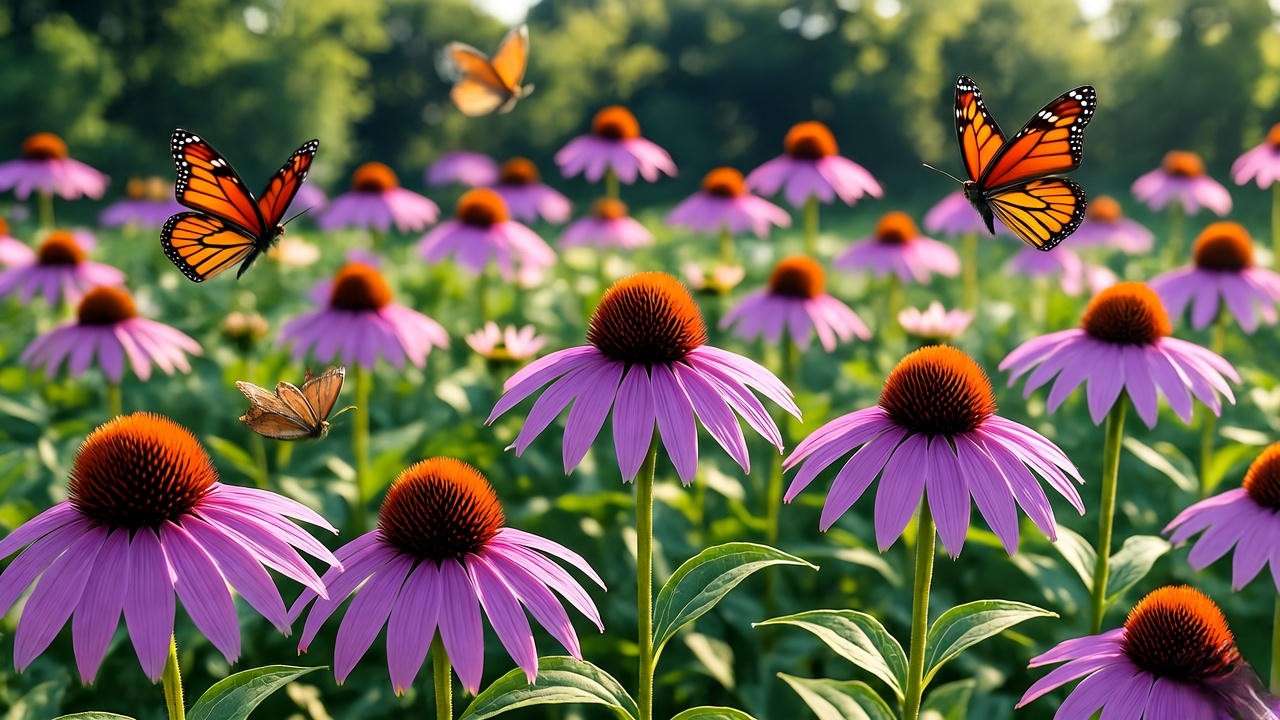
6. Russian Sage (Perovskia atriplicifolia) 🌿
Description: Russian sage is a showstopper with its airy, silvery-gray foliage and lavender-blue flower spikes that bloom from midsummer to fall.
Why It’s Great: This drought-tolerant perennial adds a soft, wispy texture to gardens and thrives in hot, dry conditions. Its long bloom time makes it a favorite for low-maintenance landscapes.
Care Tips: Plant in full sun with well-drained soil. Cut back to 6 inches in early spring to encourage bushy growth and prevent legginess. Avoid overwatering, as Russian sage prefers dry conditions.
Design Idea: Use Russian sage as a backdrop for shorter perennials like coneflowers or black-eyed Susans for a layered, vibrant look.
7. Bellflower (Campanula spp.) 🔔
Description: Bellflowers produce charming, bell-shaped blooms in shades of purple and blue, blooming from late spring to early summer. Varieties like ‘Clustered Bellflower’ are compact and versatile.
Why It’s Great: These plants are perfect for borders, rock gardens, or containers, offering a delicate yet striking appearance. They’re also low-maintenance and adaptable to various conditions.
Care Tips: Plant in partial shade to full sun with moist, well-drained soil. Deadhead regularly to prolong blooming. Divide every few years to maintain vigor.
Variety Spotlight: ‘Campanula glomerata’ is ideal for small spaces, with dense clusters of vivid purple flowers.
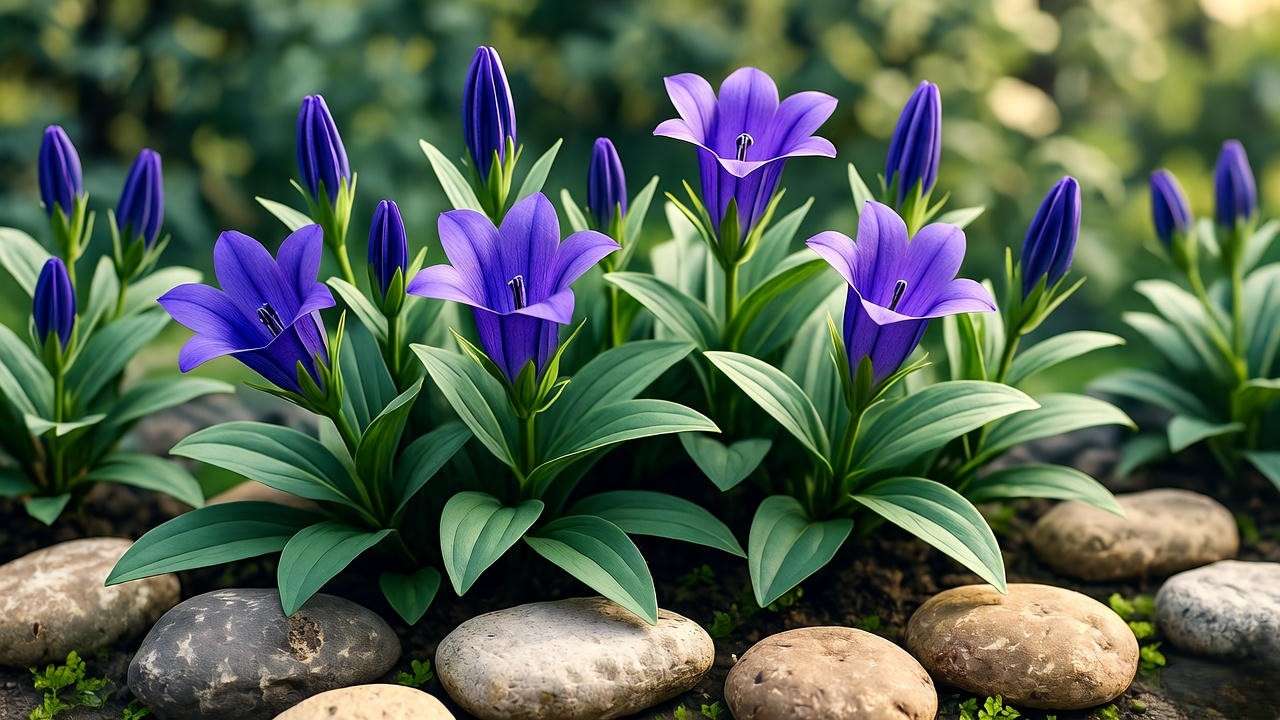
8. Iris (Iris germanica) ⚜️
Description: Bearded irises are known for their elegant, sword-like leaves and large, ruffled purple blooms that appear in late spring to early summer.
Why It’s Great: Irises bring timeless beauty to gardens and are available in a range of purple shades, from pale lavender to deep violet. They’re also deer-resistant and long-lived.
Care Tips: Plant rhizomes shallowly in well-drained soil with full sun. Divide every 3–4 years to prevent overcrowding and ensure healthy blooms. Water sparingly after establishment.
Expert Insight: According to the American Iris Society, dividing irises in late summer ensures robust blooms the following season.
9. Phlox (Phlox paniculata) 🌸
Description: Garden phlox produces clusters of star-shaped, fragrant purple flowers from midsummer to early fall. Varieties like ‘Blue Paradise’ offer rich, violet hues.
Why It’s Great: Phlox is a classic choice for cutting gardens and adds a romantic touch to borders. Its fragrance attracts butterflies and hummingbirds 🦋.
Care Tips: Plant in full sun to partial shade with rich, moist soil. Ensure good air circulation to prevent powdery mildew. Deadhead to extend the blooming season.
Design Tip: Pair phlox with white roses or silver foliage for a dreamy, moonlit garden effect.
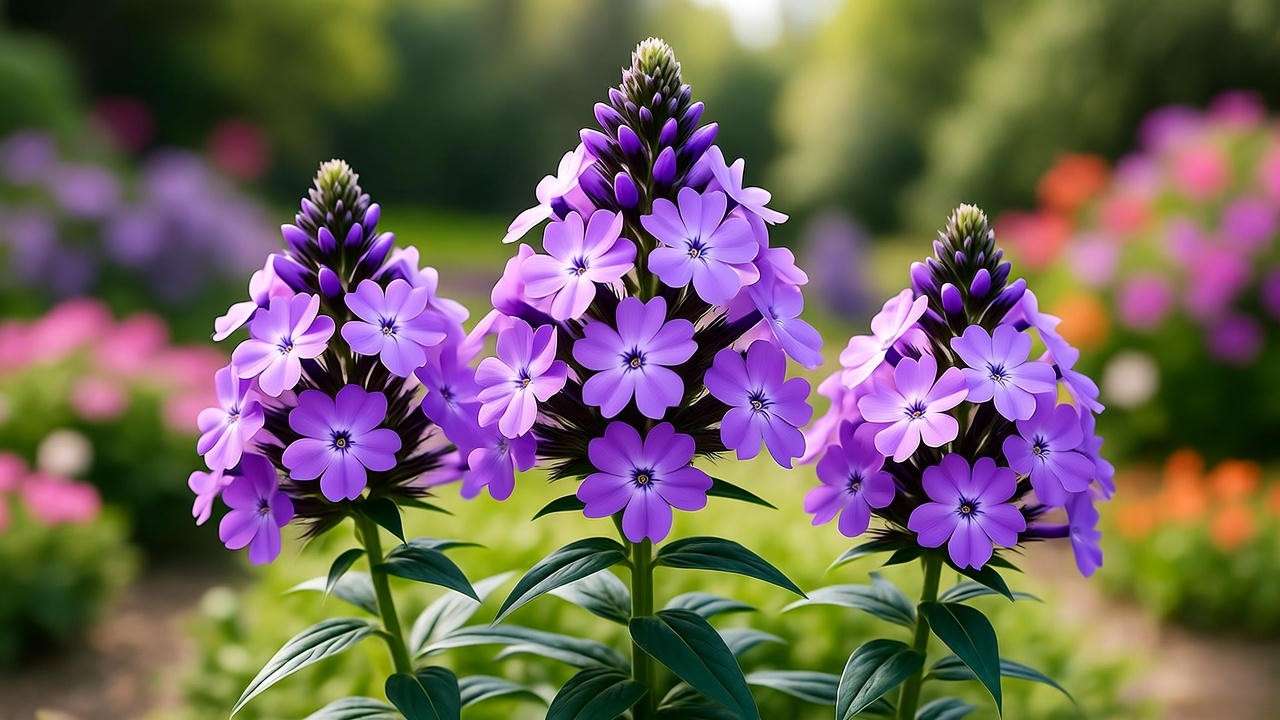
10. Aster (Aster spp.) 🌟
Description: Asters, or Michaelmas daisies, produce star-like purple flowers in late summer to fall, extending your garden’s color into autumn.
Why It’s Great: These late-bloomers are perfect for adding seasonal interest and supporting pollinators when other plants fade. They’re also easy to grow and hardy.
Care Tips: Plant in full sun with well-drained soil. Pinch back stems in early summer for bushier plants and more blooms. Divide every 2–3 years to maintain vigor.
Pollinator Note: Asters are a lifeline for butterflies and bees late in the season, making them a must for eco-friendly gardens.
How to Choose the Right Purple Perennial for Your Garden 🌻
Consider Your Climate and Hardiness Zone
Selecting the right purple flower perennial plants starts with understanding your USDA Hardiness Zone. For example, lavender thrives in Zones 5–9, while coneflowers are hardy in Zones 3–9. Check your zone (available via the USDA Plant Hardiness Zone Map) to ensure your chosen plants will survive your local climate. Most of the plants listed here are adaptable to a wide range of zones, making them accessible for gardeners across the U.S. and beyond.
Soil and Sunlight Requirements
Each perennial has unique needs, but most prefer well-drained soil and full sun (6+ hours daily). For instance, Russian sage and lavender tolerate poor, sandy soils, while phlox and bellflowers prefer richer, moister conditions. Below is a quick comparison table for easy reference:
| Plant | Sunlight | Soil Type | Water Needs |
|---|---|---|---|
| Lavender | Full sun | Well-drained, sandy | Low |
| Salvia | Full sun | Well-drained | Moderate |
| Catmint | Full sun to part shade | Well-drained, poor | Low to moderate |
| Allium | Full sun | Well-drained | Moderate |
| Coneflower | Full sun | Moderately fertile | Moderate |
| Russian Sage | Full sun | Well-drained, poor | Low |
| Bellflower | Full sun to part shade | Moist, well-drained | Moderate |
| Iris | Full sun | Well-drained | Low to moderate |
| Phlox | Full sun to part shade | Rich, moist | Moderate |
| Aster | Full sun | Well-drained | Moderate |
Garden Size and Design Goals
Your garden’s size and aesthetic goals will influence your plant choices. For small spaces or containers, try compact varieties like ‘Hidcote’ lavender or ‘Clustered Bellflower.’ For larger landscapes, Russian sage or alliums add height and drama. Consider mixing plants with different bloom times (e.g., irises for spring, phlox for summer, asters for fall) to ensure year-round interest. A well-planned garden combines heights, textures, and colors for a cohesive look.
Planting and Care Tips for Purple Perennials 🌱
Planting Guidelines
- When to Plant: Most perennials are best planted in spring or fall when temperatures are mild. Bulbous plants like alliums should be planted in fall for spring blooms.
- How to Plant: Dig a hole twice as wide as the root ball and as deep as the plant’s container. Amend soil with compost for nutrient-loving plants like phlox. Space plants according to their mature size (e.g., 12–18 inches for salvia, 24–36 inches for Russian sage).
- Soil Preparation: Ensure good drainage by adding sand or gravel to heavy clay soils. Test soil pH for plants like lavender, which prefers slightly alkaline conditions (pH 6.5–7.5).
Ongoing Maintenance
- Watering: Most purple perennials are drought-tolerant once established, but water regularly during the first year. Avoid overwatering, especially for lavender and Russian sage.
- Fertilizing: Apply a balanced, slow-release fertilizer (e.g., 10-10-10) in spring. Avoid over-fertilizing, as it can lead to leggy growth.
- Pruning: Deadhead spent blooms to encourage reblooming. Cut back perennials like salvia and catmint in late fall or early spring to promote healthy growth.
Common Problems and Solutions
- Pests: Aphids can affect phlox and asters. Use neem oil or insecticidal soap for organic control.
- Diseases: Powdery mildew is a concern for phlox. Ensure good air circulation and avoid overhead watering. Treat with a fungicide if necessary.
- Deer and Rabbits: Most plants on this list (e.g., lavender, salvia, alliums) are naturally deer-resistant, but use fencing or repellents for added protection in high-pressure areas.
Design Ideas: Creating a Stunning Purple Garden 🌷
Companion Planting
Purple perennials shine when paired with complementary colors and textures. Try these combinations:
- Lavender + White Roses: A classic, romantic look for cottage gardens.
- Salvia + Yellow Coreopsis: A vibrant contrast for modern landscapes.
- Russian Sage + Ornamental Grasses: A soft, airy backdrop for prairie-style gardens.
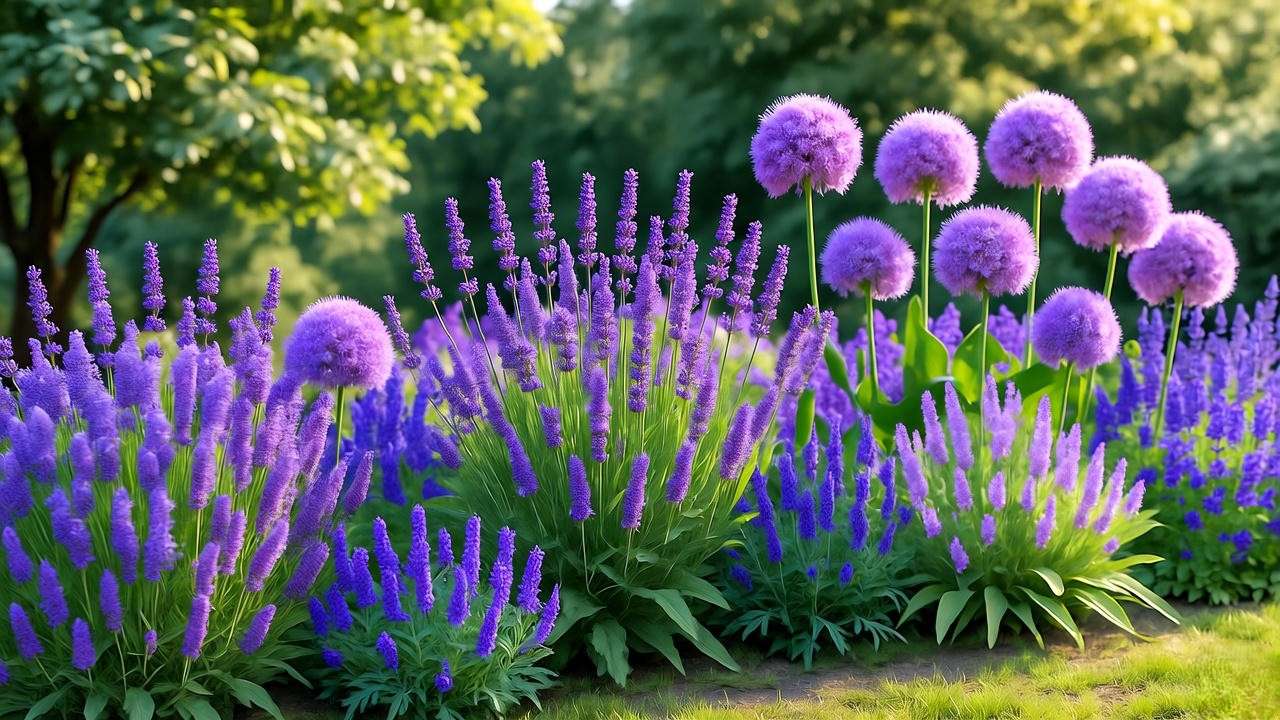
Seasonal Interest
To keep your garden colorful year-round, stagger bloom times:
- Spring: Irises and bellflowers kick off the season.
- Summer: Lavender, salvia, coneflowers, and phlox take center stage.
- Fall: Asters and Russian sage extend the show.
Incorporate evergreen shrubs or silver-foliaged plants (e.g., lamb’s ear) for winter interest.
Pollinator-Friendly Gardens
Purple flower perennial plants are a boon for pollinators. Coneflowers, salvia, and asters attract bees, butterflies, and hummingbirds 🦋. To create a wildlife-friendly garden:
- Plant in clusters to make it easier for pollinators to find nectar.
- Avoid pesticides that harm beneficial insects.
- Add a small water feature or birdbath to provide hydration for wildlife.
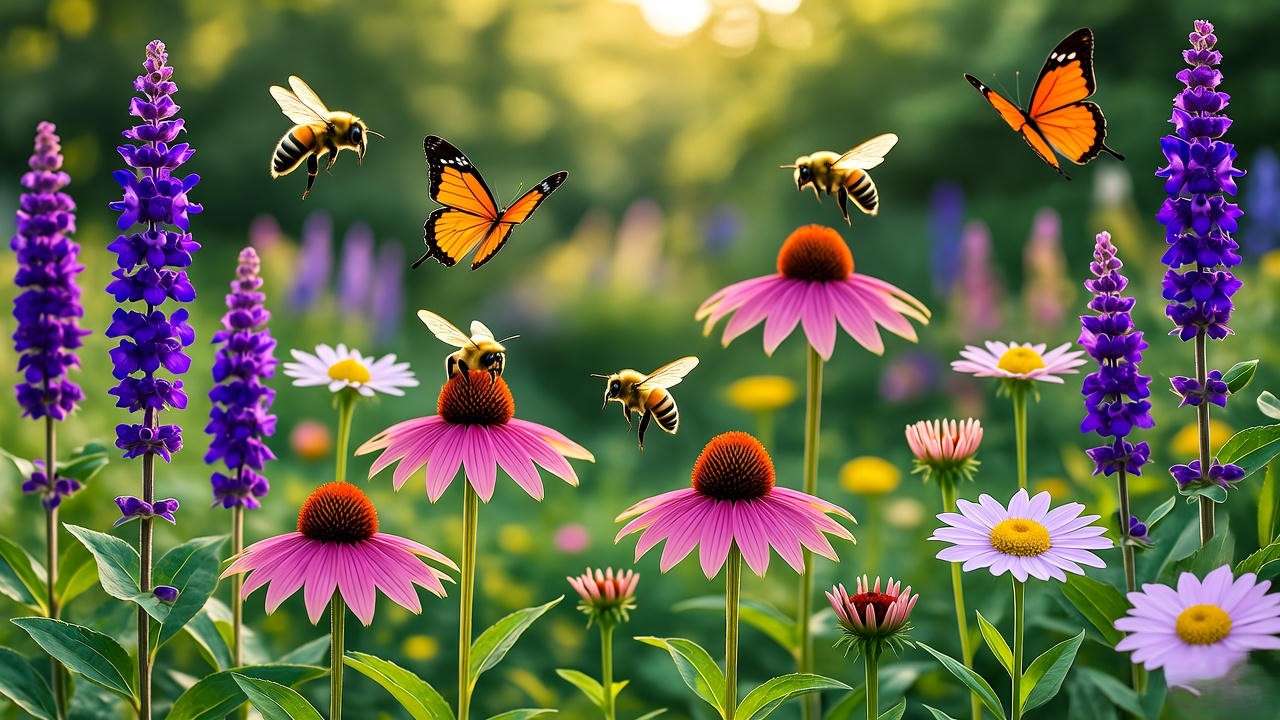
Expert Insights: Why Purple Perennials Are a Gardener’s Best Friend 🌼
“Purple perennials are a game-changer for gardeners,” says Dr. Emily Carter, a horticulturist with the RHS. “Their vibrant colors and hardiness make them a low-effort way to create a professional-looking garden.” My own experience echoes this: transforming a client’s dull backyard with a mix of lavender and coneflowers not only boosted curb appeal but also attracted a flurry of butterflies. Studies from the RHS confirm that perennials like these support biodiversity, making them a win for both aesthetics and the environment.
FAQs About Purple Flower Perennial Plants ❓
- What are the easiest purple perennials to grow?
Catmint, lavender, and coneflowers are beginner-friendly due to their low maintenance and adaptability. - How do I keep my purple flowers blooming longer?
Deadhead regularly, provide adequate sunlight, and avoid overwatering. - Are purple perennials good for beginners?
Absolutely! Most plants on this list are hardy and forgiving, perfect for novice gardeners. - Which purple perennials attract the most pollinators?
Coneflowers, salvia, and asters are top choices for bees and butterflies. - Can I grow these plants in containers?
Yes, compact varieties like ‘Hidcote’ lavender and ‘Clustered Bellflower’ thrive in pots with proper drainage.
Conclusion: Start Your Purple Perennial Journey Today! 🌸
Purple flower perennial plants are the ultimate solution for gardeners seeking vibrant, low-maintenance beauty. From the fragrant spikes of lavender to the late-season charm of asters, these plants offer endless possibilities for creating a stunning, eco-friendly garden. Start small by choosing one or two from this list, like catmint or coneflowers, and watch your outdoor space transform into a colorful oasis. Have a favorite purple perennial or a garden photo to share? Drop it in the comments or tag us with #PurplePerennialMagic on social media! 🌟
For more plant care tips, check out our articles on designing a pollinator garden or choosing low-maintenance shrubs. Happy gardening!

